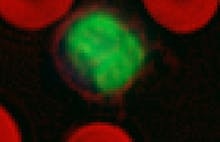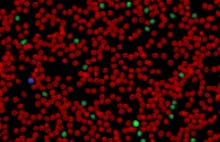Neutrophils
Definition, Absolute High & Low, and Ranges
Neutrophils definition
Neutrophils are the most abundant type of white blood cells. In healthy adults, they typically constitute about 50 to 70 percent of white blood cells and function as the first line of defense against bacteria and other foreign organisms.
Neutrophils are differentiated from other cells under the microscope by their segmented nucleus and neutral pink stain (hence the name Neutrophil). They respond to inflammation and fight bacteria mainly by their swallowing function (a process called Phagocytosis).
They also release powerful chemicals that help with tissue healing after injury.
Neutrophils and CBC test, understand your results
CBC is a complete blood count. It is performed by first taking a blood sample from the patient using a simple finger prick or venous draw. Once a blood sample is collected, it is then inserted into a machine called a hematology analyzer. This machine has the ability to differentiate and count each type of cells in the blood. This test helps doctors investigate a wide range of disorders or evaluate general health.
Complete blood count assesses the three main categories of cells in the blood: Red blood cells which carry oxygen, White blood cells which defend against infections, and Platelets which help with blood clotting.
White blood cells in the blood consist of five main types of cells (Neutrophils, Basophils, Eosinophils, Lymphocytes, and Monocytes). The normal white blood cell count is 4,500 to 11,000 cells per microliter (cells/mcL). To be able to assess specific conditions, the analyzer gives a specific number to each type of the white blood cells.
Neutrophils are the most numerous as they constitute about 50 to 70 percent of the total number of white blood cells. This percentage is what you read in your CBC as the Relative Neutrophil Count. However, to accurately assess how many neutrophils the blood contains, an Absolute Neutrophil Count is needed.
Absolute neutrophil count
Absolute Neutrophil Count (ANC) is the actual number of neutrophils in the blood sample. It is not measured directly, but calculated by multiplying the white blood cell count by the Neutrophils Percentage or the Relative Neutrophil Count in the sample.
For example, a 70% Relative Neutrophil Count may seem within normal limits. However, if the total WBC is 30,000, the absolute value (70% x 30,000) of 21,000 would be an abnormally high count.
A normal Neutrophils Count is between 2,500 and 7,000.
The process of measuring the Absolute Neutrophil Count is automated by the analyzer and shows in some CBCs as the neutrophil automated count.
Neutrophilia or high Neutrophils is diagnosed when the CBC shows an Absolute Neutrophil Count over 7,000. There are many causes of Neutrophilia. Infections mostly caused by bacteria will increase the Neutrophil Count in the blood. Inflammation, Steroids, and Leukemia intake can raise the Neutrophil Count as well.
Neutropenia is diagnosed when the CBC shows an Absolute Neutrophil Count under 2,500. Causes of Neutropenia include certain drug uses, bone marrow failure, and the suppression of the immune system.
Immature neutrophils causes
The Neutrophils Count in a neutrophils blood test includes mature and immature neutrophils.
In some tests, immature neutrophils are called “bands”, and others use the clode term: immature granulocytes. A high immature Neutrophil Count in a CBC mostly indicates the presence of infection. Neutrophils in the bone marrow go through many steps of maturation. Stem cells differentiate into successive types of immature neutrophils that end with the band form which is the final step before a fully mature neutrophil. In the case of bacterial infection, mature neutrophils in the circulations migrate to the tissues in order to fight invading microorganisms.
The bone marrow then responds to the decrease of the Neutrophil Count in the blood circulation by releasing stored mature neutrophils.
However, as this storage becomes depleted, the bone marrow has to release neutrophils in its immature forms. This is what doctors call a “Left Shift”. When you see a left shift in a CBC, it is correlated with a high number of immature neutrophils due to infection. The term “Right shift” is often applied when the number of immature neutrophils is low and can indicate chronic infection.
Discover our hematology analyzer - Sight OLO
Disclaimer: The content of this knowledge post intends to provide general information related to topics that are relevant to blood diagnostics and may not be used in relation to the operation of Sight OLO. For detailed information on the diagnostic parameters and specifications of Sight OLO, please refer to the official Operator's Manual.


